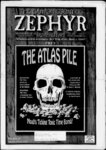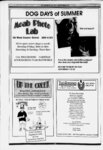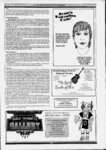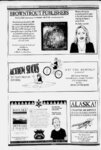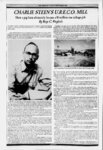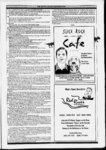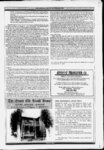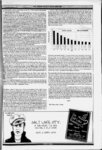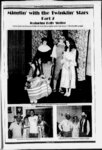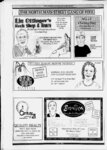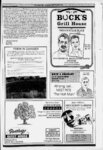| OCR Text |
Show CHARLIE STEENS U.R.E.C.O. MILL How a pig farm ultimately became a 10 million ton tailings pile By Raye C. Rinyholz is pleased to include an excerpt from Raye C. Ringhctes excellent book Uranium Frenzy. It is published by the University of New Mexico Press and is available at Bad of Beyond The Zephyr Bocks in Moab. s, America was experiencing the greatest mining boom in its history. Almost the six hundred producers cm the Colorado Plateau were shipping uranium ore. Ore production was doubling every eighteen months. Employment in the industry topped eight thousand workers in mines and mills. Yet the number of processing mills to transform raw rock into yellowcake were not keeping up with the escalating production. By mid-1950- was impressed with Wimpfen's White Paper. So impressed that Johnson transferred him to Grand Junction to estab lish and manage the Operations Office he had concentrates and suggested. He was given unlimited authority to acquire uranium ores and fire and could hire employees, as could execute procurement contracts up to $400 million. He needed. He was authorized to make capital investments up to two million dollars. All without Washington asking Washington. Wimpfen put his plan into action. By the time Steen approadied him about building a mill, the uranium boom was well under way. He was pleased that his former college associate had hit it big. For Steen's sake. And for the AEC program. "I couldn't have been more delighted because he was me of our first millionaires," Wimpfen (L) "Uranium King Charlie Steen (ABOVE) The defunct Atlas Mill in the late 80s. said. "That was what we needecL.that flair, publicity attached to someone who was on his uppers. We need guys like that. He's a departure from the norm and that's die kind of guys that civilization makes advances on. We're not going to make much progress with the ordinary individual" interested in Steen's proposal and encouraged him to go forward with it As was Wimpfen ore production was multiplying, mill capacity was becoming critical. Besides, he was a believer in more, involvment of private enterprise. "I pointed out to him that in the history of mining very few of the individuals Out found the deposit were able to hang onto it and carry it to a successful conclusion where it became a corporate entity with a full vertical line... mining through processing to sale of the finished product I encouraged him to do it" With the AECs blessing, Steen and Melich, "both country boys inexperienced in mill construction and operation and having less knowledge of 'Big Time' financing, plunged into the stream..." They went to Salt Lake Gty to talk with Melidi's father-in-laE.H. Snyder. Snyder, the president of Combined Me tals Reduction Company, had many years of experience in metallurgy and operations in the lead-zin- c industry. He agreed to go into partnership with Utex and form the Uranium Reduction Company (URECO) to build and Exploration Company operate the mill. It was decided that the proposed mill would utilize a radically new metallurgical process. The orea were not system used in the older mills, which were designed to treat vanadium-uraniuas effective for me of the Big Indian District A better choice was the new process that had been developed in AEC pilot plants. It had not yet been used in a commercial plant The heart of the process were tiny, tapioca sized beads of yellow resin. After raw ore was crushed to the proper size for handling, it was add-le- a died into an unfiltered slurry. Then specially sized ion exchange resins contained in wire mesh baskets were jigged slowly up and down in a flowing stream of uranium-bearin- g pulp. Die beads became coated with uranium. Final ly, the uranium was stripped from the resins in a chemical bath. The mill was planned for a rated tons of ore per day. This would capadty of require commitment to the mill of a two million ton ore reserve. Before Steen could get AEC approval of the project, it was necessary to prove that the uranium tonnage in the Big Indian Wash District and surrounding areas justified construction of the facility. E.J. Longyear Company was hired to undertake a preliminary engineering and metallurgical research study. The firm concluded that the mill was feasible. Steen's mines, alone, were calculated to have a total of 967,000 tons. The analysts anticipated that there would be an excess of one million tons from other areas in the district within the next few years. The AEC was satisfied with the report. Next, URECO negotiated a construction contract with Foley Brothers, Incorporated. Foley, who was associated with New York investment bankers Kuhn and Loeb and Company, agreed to set up the initial financing. From this beginning, Steen and Melich proceeded to raise nine million dollars for a new company using a new process that was entering a field heretofore dominated by the federal pedestrian-typ- e w m resin-in-pu- The AEC had turned die tap and engendered a flood. To spur exploration by individual feet of test drilling per prospectors and mining companies, the Commission averaged 993 miles of aocess Plateau bonuses. out in over with tamed the $3,725,000 year. They paid They roads. The Grand Junction office received more than three thousand visitors and processed an excess of six thousand pieces of mail each month. AEC geologists assured the inquirers that thousands of square miles on the Colorado Plateau remained to be explored. But the government made it tough for an individual to build a processing mill. Unde Sam was the only customer for uranium. It was up to the feds to decide if there was enough ore in a particular district to warrant building a new mill Any individual considering getting into the milling business had to be "Q-- " cleared by the F.B.I. to prove that they were dependable and had not been connected with any subversive organizations. Only after such approval could they have access to the classified informa tion they would need. Steen went to Grand Junction in 1954 to discuss the possibility of his mill with the AEC The current manager of the AEC compound was Sheldon A. Wimpfen. Steen had known Wimpfen at Texas School of Mines and Metallurgy. Wimpfen had spent twenty years working in various phases of the mining industry. Exploration. Mine operation. Administration. Editing mining journals. Finally, as Assistant Director of the AEC Division of Raw Materials, under Jesse Johnson in Washington, D.C In 1957, Johnson sent Wimpfen to Grand Junction to evaluate the uranium procurement program. Wimpfen was unimpressed. He wrote a "White Paper" outlining his assessment of the situation. He reported that the Grand Junction office was not well organized. People were all doing things their own way, with no common basis. There was an Exploration Branch that reported to Phil Merritt in New York. And there was a Raw Materials Office under the jurisdiction of George Gallagher in Washington, D.C Wimpfen felt that the exploration and procurement programs should be consolidated under a single Operations Office at Grand Junction. The manager would report directly to Jesse Johnson. Wimpfen also felt that the AEC was ineffectual in its incentive program to encourage prospecting and mining. He was .pa convinced that uranium production could be doubled within a year. Die circulars offering bonuses and other encouragements to prospectors weren't doing the job. Prices for uranium should be raised. More buying stations should be built. Additional lands should be withdrawn from the public domain for exploration and mining. one-milli-on resin-in-pu- lp lp -- fifteen-hundr- ed government. At first, Steen flew to Indio to see if he could interest Floyd Odium in putting money into the project. Odium, who was in the process of building his uranium empire, wasn't receptive to the eCn Melich flew to New York. There they were successful. They borrowed $3,500,000 from Chemical Bank of New York for construction and working capital They sold SW000 of the company's first mortgage bonds. Die balance of $2,300,000 in debentures were placed with various investors and stockholders. In this way, through conven tional institutional and equity channels, they financed the first large independent uranium mill in the United States. Die loans and sales were contingent on URECO's guarantee of competent management Tnrough Ed Snyder's connection, American Lead, Zinc and Smelting Company signed a contract |
